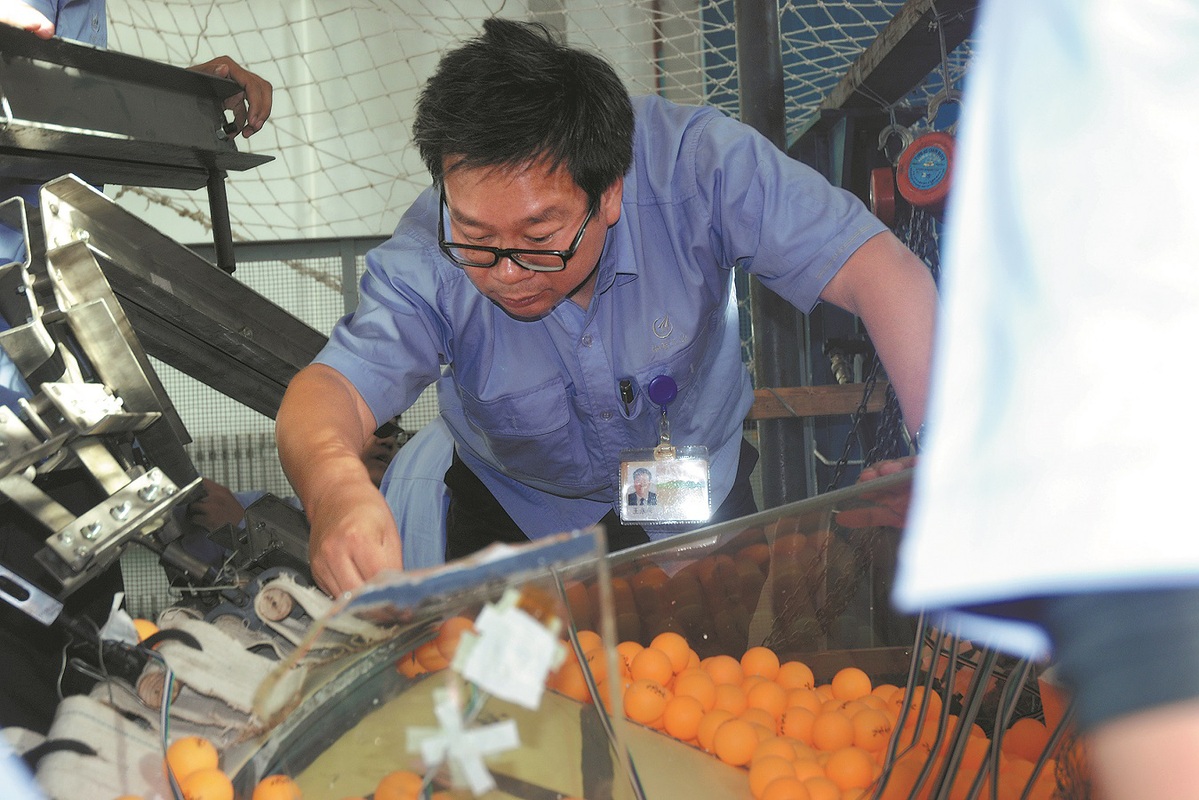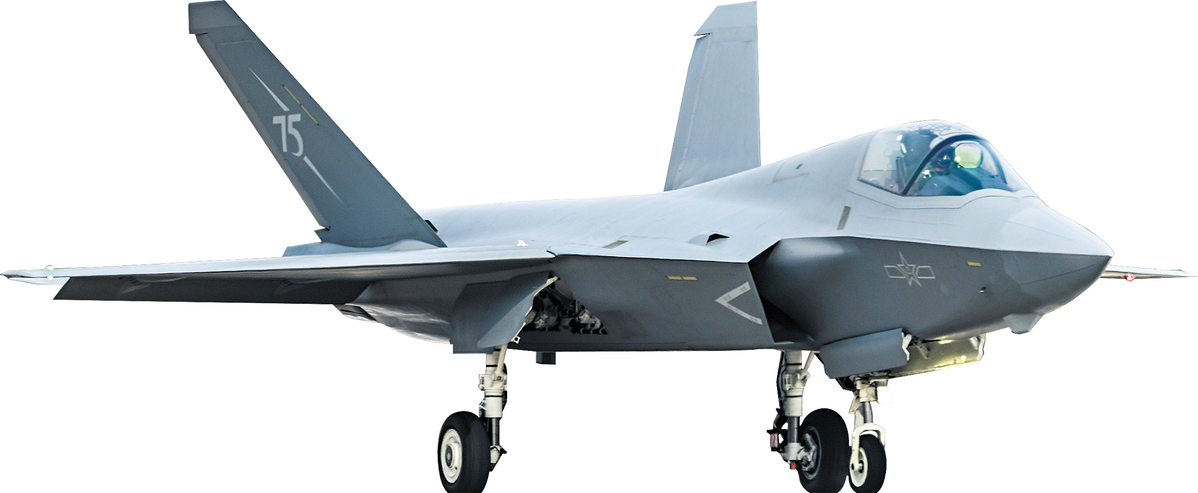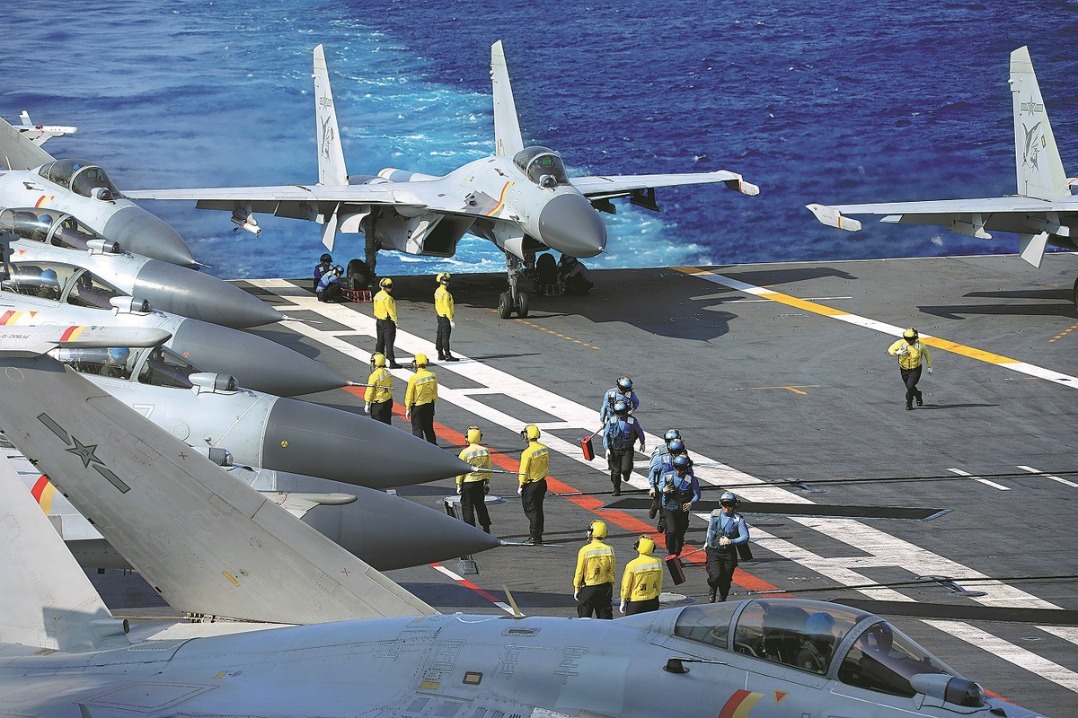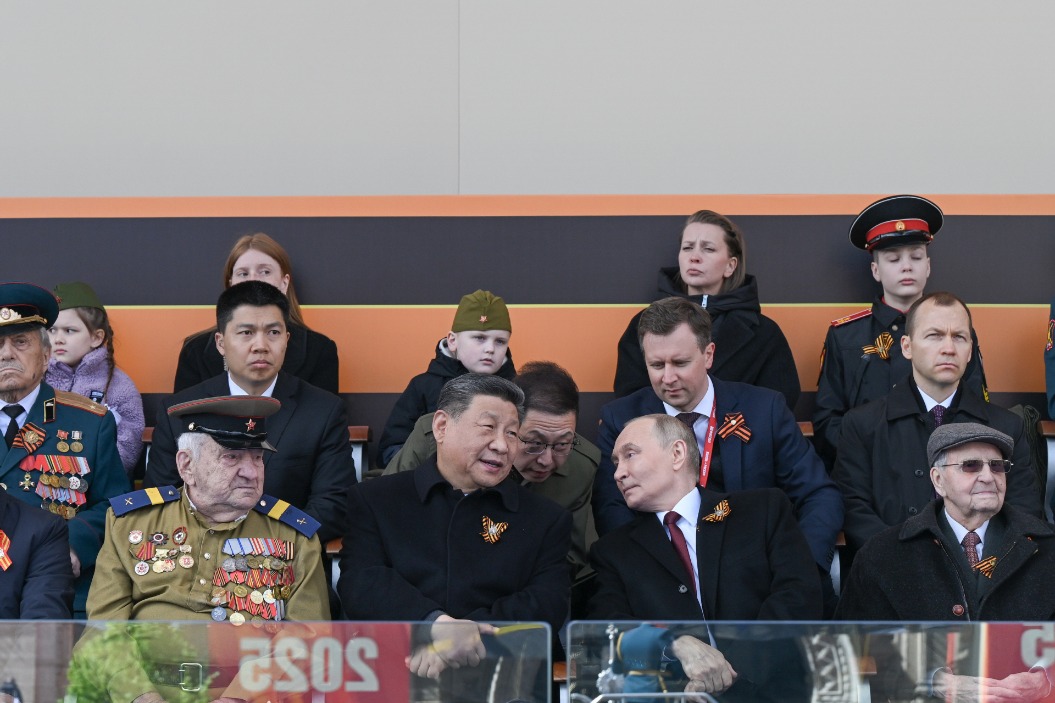New stealth fighter jet to play 'crucial role' in nation's defense
Project leader of J-35A says aircraft will detect 'hostile objects', strengthen network


Aeronautical aspiration
In his four decades at AVIC, the country's dominant aircraft maker, Wang has mostly kept a low-profile although he is the chief designer of several models of supersonic combat jets.
Born in February 1965 to a farming family in Dehui, Jilin province, Wang was one of the first among his contemporaries to see a plane in person. This was because his home and primary school were near an Air Force aircraft repair workshop.
"I would often see planes in the skies," he recalled. "I also heard many of my classmates talking about how their parents repaired planes at work. This was one reason that led to my interest in aircraft."
As a young boy, witnessing air defense measures at home and other places he asked his parents about them, and they told him about the "menace from the skies". "I gradually learned about the power of aircraft and consequently developed a personal interest in them," he said.
At the age of 17, Wang needed to select a university and major before the national college entrance examination that summer. He decided to study aircraft design at the Beijing Institute of Aeronautics, now known as Beihang University.
"I thought carefully and considered several factors," he said.
"First, I wished to study in Beijing. Second, I was sure that designing aircraft was what I wanted to do. And finally, considering my scores, the Beijing Institute of Aeronautics was not too difficult for me to apply to," he recalled.

After four years, he graduated in 1986 with a bachelor's degree and was immediately assigned to the Shenyang Aircraft Design and Research Institute, which was part of the then Ministry of Aviation Industry. With five other graduates, he was assigned to the general design team.
Even after 39 years, the memory of his first day at the institute still lives vividly in his mind.
"I remember clearly that the team's deputy chief said to me, 'Wang, please check this bomb manual and draw an outline of this type of bomb'. There were only vague pictures and some basic parameters in that manual, so I had to figure out how to make that outline with the resources available to me," he said.
"That was not easy, but I came to realize it was actually good homework for entry-level engineers like me to learn how to overcome difficulties and make things right," Wang said.
It was not long before he started to be given important tasks.
In the winter of 1986, Wang was sent to temporarily assist a senior designer at the institute who was responsible for researching the feasibility of a spaceplane. He displayed good skills and impressed the designer, who asked for the young man's formal transfer to the team.
In the spring of 1987, the second year of Wang's career at the institute, he was named leader of the spaceplane's pre-research team. He worked on the project until the early 1990s when a spaceplane was found to be far beyond China's technological and technical capabilities at the time.























